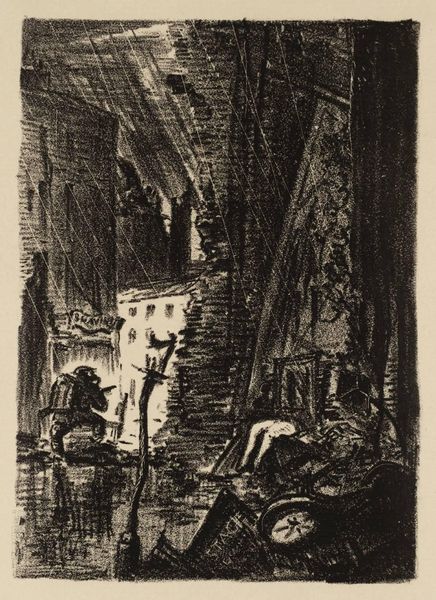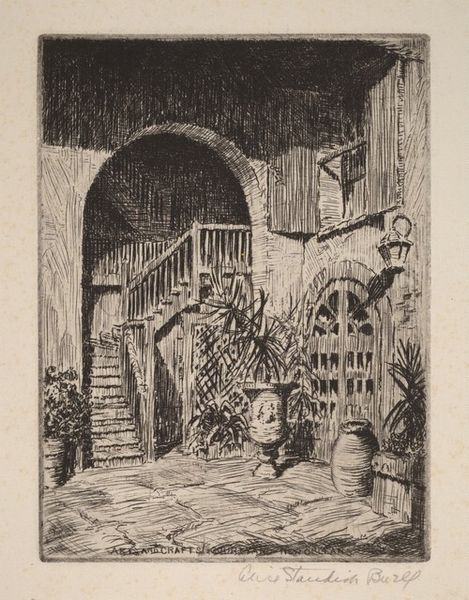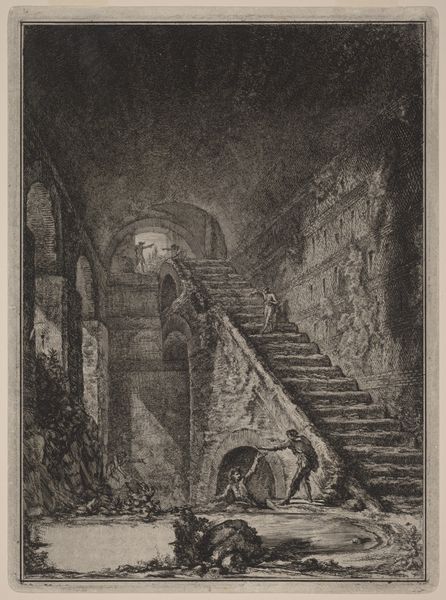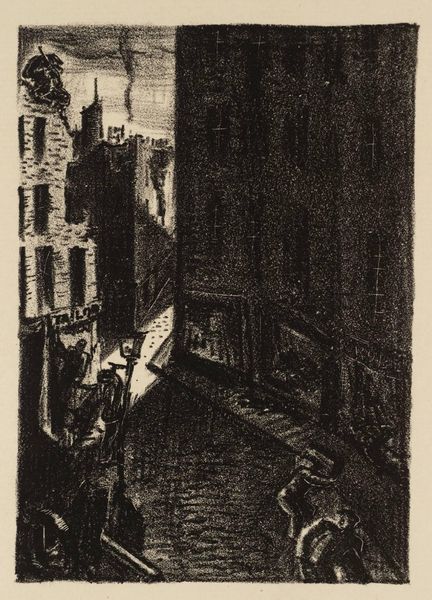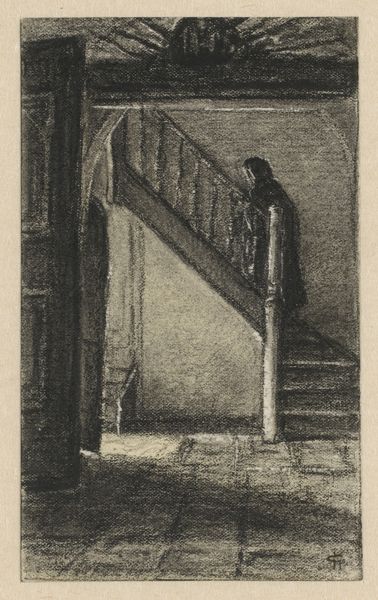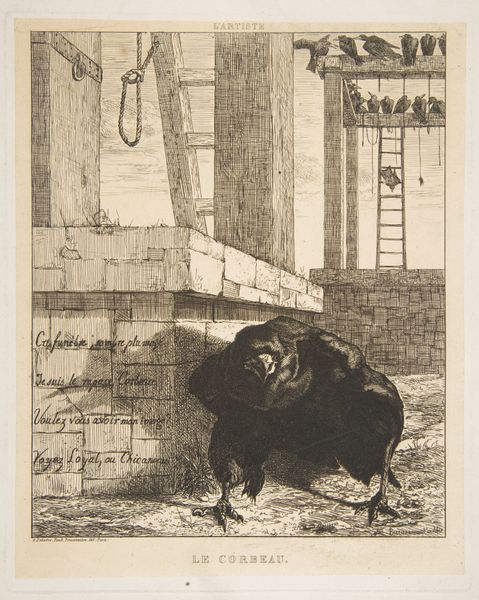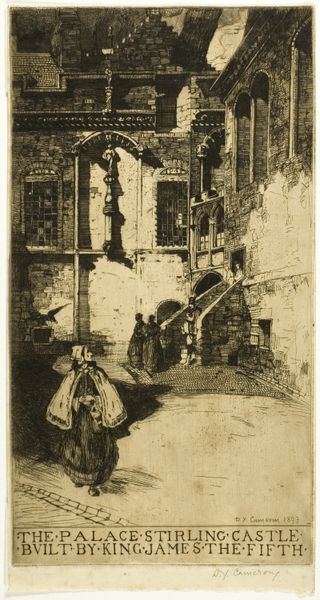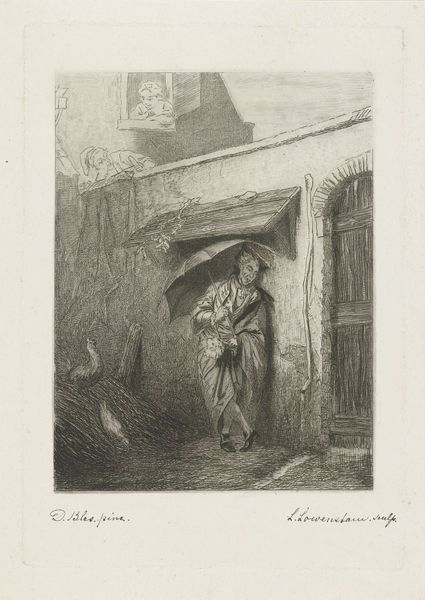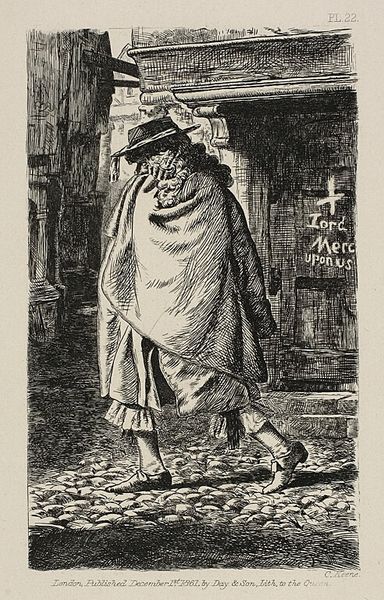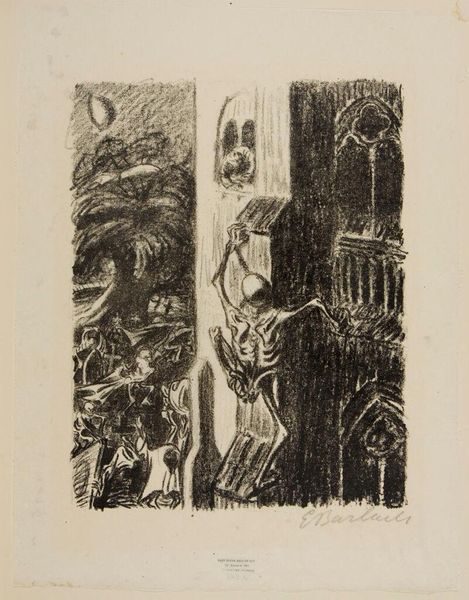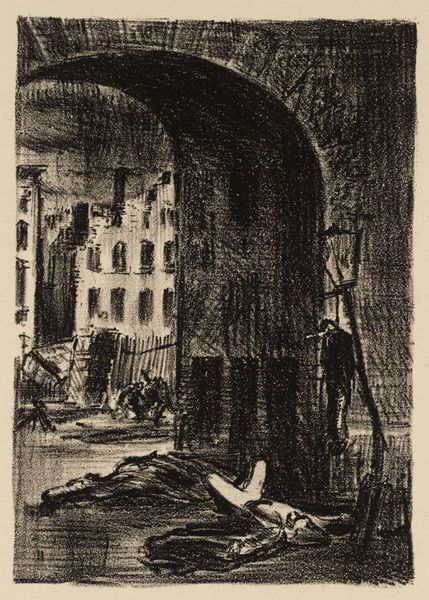
Dimensions: image: 133 x 95 mm
Copyright: © The estate of James Boswell | CC-BY-NC-ND 4.0 DEED, Photo: Tate
Editor: This is James Boswell's "The Fall of London," from the Tate collection. It looks like a chaotic scene of people fleeing down a grand staircase. What cultural memories do you think this image evokes? Curator: Note the title: "The Fall." It triggers associations with iconic "falls" throughout history and myth – the Fall of Man, the fall of Icarus – all potent symbols of hubris and societal collapse. The staircase itself becomes a visual metaphor, doesn’t it? Editor: Yes, definitely, it’s so dramatic! I wonder if it’s a comment on societal structures. Curator: Precisely! The fleeing figures, rendered with stark, almost brutal lines, embody a collective anxiety. What do you think this artwork says about cultural resilience? Editor: It makes me think about how art can reflect our deepest fears. Curator: Indeed. Boswell’s work acts as a powerful reminder of our shared vulnerabilities and the enduring power of visual symbols.
Comments
tate 8 months ago
⋮
http://www.tate.org.uk/art/artworks/boswell-the-fall-of-london-museum-p11657
Join the conversation
Join millions of artists and users on Artera today and experience the ultimate creative platform.
tate 8 months ago
⋮
This is one of eight small lithographs Boswell made in 1933 describing The Fall of London. Ron Heisler believes that they were originally conceived for a book by Frank McIlraith and Roy Connolly called Invasion From The Air which describes a Fascist invasion of England (information from Ron Heisler, August 2003). The theme of the book, which was published in 1934, is reminiscent of Boswell’s prints, which illustrate both popular uprisings in the City of London and horrific scenes of the city in ruins. In Museum he portrays a sinister looking figure armed with a rifle walking up a wide flight of steps, at the top of which bodies are piled in a heap. The one man who is left standing will presumably be the next victim of the armed figure pointing his rifle down the upper flight of steps. The remnants of the museum’s collection, including a broken statue, fill the foreground and another figure on the left of the staircase is poised to shoot in to the darkness. The awkward movements and bulky figures of the revolutionaries are reminiscent of the physiognomies of the ruling classes in George Grosz’s (1893-1959) satirical caricatures. Ruth Boswell believes that the setting was almost certainly intended to be the British Museum which, in this shocking image, has been destroyed beyond recognition.
